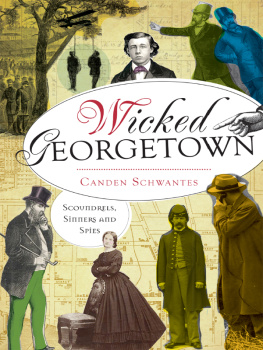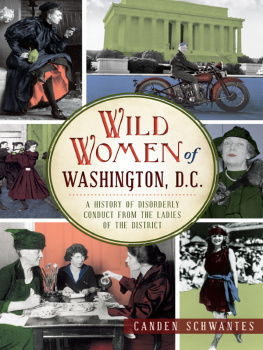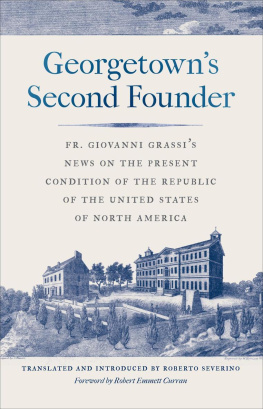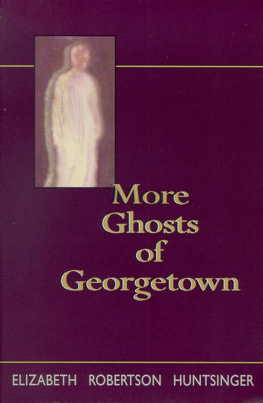

Published by The History Press
Charleston, SC 29403
www.historypress.net
Copyright 2013 by Canden Schwantes
All rights reserved
First published 2013
e-book edition 2013
Manufactured in the United States
ISBN 978.1.62584.083.7
Library of Congress CIP data applied for.
print edition ISBN 978.1.62619.005.4
Notice: The information in this book is true and complete to the best of our knowledge. It is offered without guarantee on the part of the author or The History Press. The author and The History Press disclaim all liability in connection with the use of this book.
All rights reserved. No part of this book may be reproduced or transmitted in any form whatsoever without prior written permission from the publisher except in the case of brief quotations embodied in critical articles and reviews.
Contents
Acknowledgements
Since Im writing this section before Ive actually finished writing the book, some of these are pre-emptive thank-yous for the stress I knew Id put you through! None of my research, writing or long days would be possible without the support of my partner, Manny. My mom and dad have already read this book a few times from rough draft to final, so if there are any spelling errors, you can blame them. A special thanks to Balladve (Margaret and Anders) for serenading my writing sessions and the owners of Jacobs Coffee House for serving me endless cups of tea. None of this would have been possible without Hannah and everyone at The History Press, my colleagues at DC By Foot and the DC Historical Society and Kiplinger Research Library. And a special thanks to you for being interested in the darker side of Georgetown!
Chapter 1
The Less Scandalous Georgetown
A Background
Every neighborhood has skeletons in its closeteven those with the best addresses known for being home to the rich and famous, celebrities and senators. Well, maybe we shouldve expected it from the senators. Georgetowns closets may be walk-ins, but they still have their share of secrets and well-dressed skeletons. From nuns who ran away from the convent to spying for the enemy during the Civil War, the Georgetown rumor mill had plenty of fodder to keep itself running.
Georgetown is a neighborhood, but mention the name to someone unfamiliar with the area and they will likely think of the university. This enclave of elites is more than a habitat of academics and researchers. Today, Georgetown has the reputation of being a high-society neighborhood, but that wasnt always the case. The small town begin in 1751 as a port along the Potomac River, and it was probably not named after the George you are thinking of. You were thinking of George Clooney, werent you? Although there is not an agreement on the namesake, its likely named for either George II, King of England at the time when Maryland was still a colony, or after the two landowners from whom the land was bought: George Gordan and George Beall.
There were multiple landowners in the area when the Maryland General Assembly decided to form a town along Rock Creek and the Potomac River. These land holdings had interesting names such as Conjurers Disappointment, Resurvey on Salp, Frogland and Pretty Prospect. But the holdings that were chosen to become George Town were the tracts Knaves Disappointment, Bealls Level and Rock of Dumbarton. George Beall was very much against the purchasing of his land, but the Maryland Assembly was not so much offering to purchase it as it was telling him he had to sell. He reluctantly agreed to the purchase price but included a letter protesting the acts and preserving his right to seek future redress. In addition to payment for their lands, each George got to pick two lots in the new town.

Georgetown Universitys Healy Hall. Library of Congress.

A 1792 map showing what would become the District of Columbia. Library of Congress.
The city thrived along the Potomac River as a tobacco inspection station and continued to grow through the years. Traders and merchants began to move to the area from the nearby farms. One of these men was Christopher Lehman, a German immigrant living in Pennsylvania who wished to trade the farm life for a profession in woodworking. He moved to Georgetown and was able to purchase land on the main street and began building a house of stone. The Old Stone House, as it is called today, was built in 1765 and is the oldest structure in the area still standing.
Georgetown proved an ideal location for business meetings and lodgings once the United States government decided to move the capital from New York City to a new location. Congress agreed to locate the new federal district in the undeveloped area along the Potomac River between the Eastern Branch (now called the Anacostia River) and the Connogocheque Creek with lands from both Maryland and Virginia. At this point, there was not much there other than swamplands and farms and a few small clusters of buildings that could maybe be called villages. But there was Georgetown.

Old postcard of Georgetown. Library of Congress.
Georgetown had roads to drive on, inns to stay at, taverns to drink in and the rich men needed to fund the whole endeavor. It was here that George Washington met with these wealthy residents to discuss the speculation of soon-to-be federal lands. The District of Columbia was to be one hundred square miles and include the port cities of Georgetown and Alexandria.
According to legend, Georgetown may have played a part in the layout of the federal city, including where its main attraction, the Capitol, is located. Washingtons city planner, Peter (Pierre) Charles LEnfant was to set out and view for himself the landscape of the area to envision his plan. With Congress paying off a war, there was not much in the coffers to build a new city from scratch, and President Washington was mostly on his own in figuring out how to pay for it. His idea was to have investors purchase plots of land in anticipation of selling them for a profit once the city was completed. With the location of the city to be in the general area between Georgetown and the village of Carrollsburgh, Washington decided to pit these towns against one another. Should the wealthy residents of Georgetown see LEnfant showing an interest closer to Carrollsburgh, they might offer to pay more for the plots of land closer to their homes.
Of course, the plan backfired. As LEnfant wandered closer to Carrollsburgh near the Anacostia River, he came across Jenkins Hill, declaring it a pedestal awaiting a superstructure. He decided that this was the perfect place for the peoples part of the governmentthe Congress House. Thomas Jefferson later dubbed it the Capitol, paying homage to the Romes Capitoline Hill. Jenkins Hill was much closer to Carrollsburgh than Georgetown, but LEnfant was not concerned about this. If he had more of a financial stake or, rather, had he cared more about the financial stake in this endeavor, the Capitol building and center of D.C. might be a bit closer to Georgetown.
Next page










